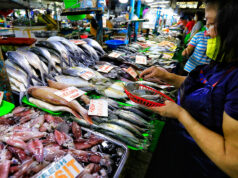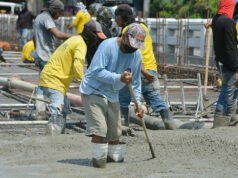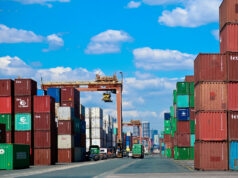Spending growth to slow — S&P
By Melissa Luz T. Lopez
Senior Reporter
ANY INCREASE in household consumption will likely be slower in the year ahead as elevated overall price hikes and higher interest rates dampen demand, while state spending could ease in a bid to narrow the current account deficit, a credit rater said in a report.
Analysts at S&P Global Ratings said that inflation appears to have peaked already but will still be elevated in early 2019, which could make gross domestic product (GDP) growth miss the state’s 7-8% target for that year.
“We maintain our strong outlook for domestically driven medium-term growth in the Philippines, despite key headwinds in the short term,” S&P said in the November issue of its Asia-Pacific Economic Snapshots report. “Consumption growth will stay low relative to recent history due to inflation, while the rollout of some non-crucial infrastructure projects will be slower as the government tries to rein in the current account deficit.”
S&P has downgraded its Philippine growth forecast to 6.5% this year from 6.7%, matching the low end of the government’s revised 6.5-6.9% projection. Growth averaged 6.3% so far, with the third quarter pace easing to a three-year low of 6.1%. This was due to softer private consumption growth, which settled at 5.2% from 5.9% the previous quarter.
For 2019, S&P sees growth at 6.6%, but below the 7-8% full-year goal.
The debt watcher acknowledged that recent month-on-month inflation rates show slowing momentum as global oil prices have dropped while food costs have eased.
“The liberalization of rice imports and the suspension of the January fuel tax will help ease inflation further. Nonetheless, it will take some time for headline numbers to fall back into the Bangko Sentral ng Pilipinas’ (BSP) target range,” the report read.
Inflation remained at 6.7% in October, matching September’s print which was at a nine-year high. However, authorities noted a sharp decline in the month-on-month pace to 0.3% from 0.9% previously, which they took as a sign that consumer price increases are finally moderating.
Prices have risen by 5.1% from January to October, short of the BSP’s 5.3% forecast but well beyond the original 2-4% target range for 2018. The central bank sees inflation scaling back to 3.5% in 2019 due to the two reforms from the Executive.
Five consecutive rate hikes from the BSP, totaling 175 basis points, may also help put a lid on inflation, but they could dampen demand as well. “To counter potential second-round impacts from supply-side inflation, BSP has been forced to tighten monetary policy this year, potentially dampening the domestic demand growth outlook next year,” S&P said. “Externally, global trade tensions continue to threaten export demand and onshore confidence, while the current account deficit continues to make the economy more vulnerable to EM market selloffs.”
The Philippines has held a “BBB” rating — a notch above minimum investment grade — with a “positive” outlook from S&P since April.



